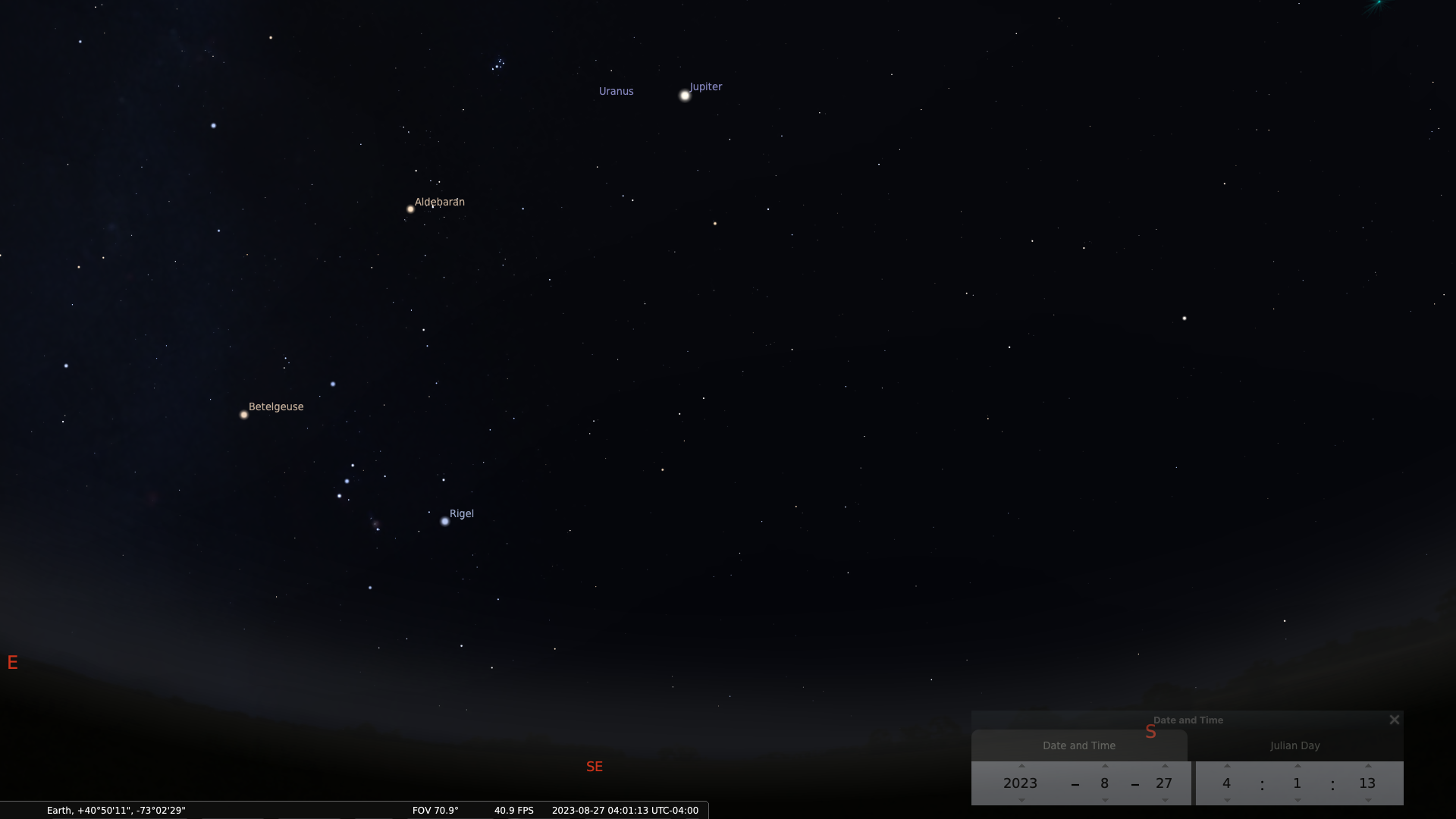
Late summer sees Orion rise low in the southeast during the very early hours of August 27, 2023. Note Jupiter and Aldebaran, the red giant star that marks the right eye of Taurus, the Bull.
This is the fifth installment of our ten-part series on the brightest stars and, with it, we’re pleased to present the red supergiant star, Betelgeuse, the right shoulder of Orion, the hunter.

Orion with red supergiant Betelgeuse in the upper left (east) as the hunter’s right shoulder. Image courtesy: the author.
Even though we’re still in August and Orion is a winter constellation, its prominence as a near-term supernova candidate makes it especially interesting. We’ve recently produced 2 videos and a podcast discussing Betelgeuse, so it’s fitting that we discuss the star here. You’ll see Orion, Betelgeuse and many of the stars of winter if you stay up late enough (later than 4:00 AM now).
Betelgeuse was a bright, hot O-class star before running out of hydrogen fuel and transitioning to helium in its core. Despite its low temperature of around 3,500 Kelvin, it’s more than 100,000 times as luminous as our Sun, meaning it can crack the top 10 brightest stars in spite of being almost 600 light-years distant. When Betelgeuse does go supernova, it will be the brightest star in the sky for weeks and months and visible during the day!
Back in 2019, the red supergiant star had dimmed dramatically and uncharacteristically, resulting in a flurry of speculation that the star was about to end its life in spectacular fashion as a Type-II supernova. That didn’t happen. It was later determined that the star had sustained a large-mass ejection, partially eclipsing the star, thus reducing its apparent brightness. Fierce stellar winds and large-scale mass ejections are consistent with the behavior of high-mass stars nearing the end of their lives.
What would happen if we replaced the sun with Betelgeuse?
Related content:
Betelgeuse – 2 Great New Videos from Astronomy For Change!
Podcast: Does the Brightening of Betelgeuse Herald The Immanent Occurrence of a New Galactic Supernova?
A quick, interactive web-based version of Stellarium is available here Tonight's Sky. When you launch the application, it defaults to north-facing and your location (on mobile and desktop).
Astronomy For Change: https://astronomyforchange.org
Did you enjoy this article or like what we do? Why not leave a tip or buy us a Coffee?
Follow Us On Twitter: https://twitter.com/astronomychange
Why not support us on Patreon: https://www.patreon.com/astronomyforchange
Imagination is more important than knowledge
![]()
An index of all articles can be found here.
If you enjoyed this article, please consider supporting us with a modest donation
or through a subscription on our Patreon Page
Membership at Astronomy for Change is Free!



